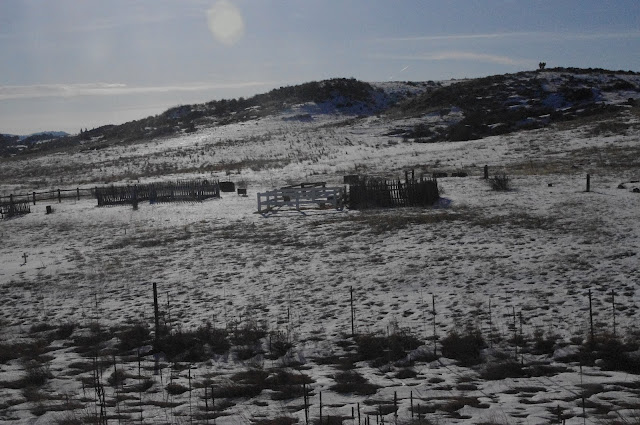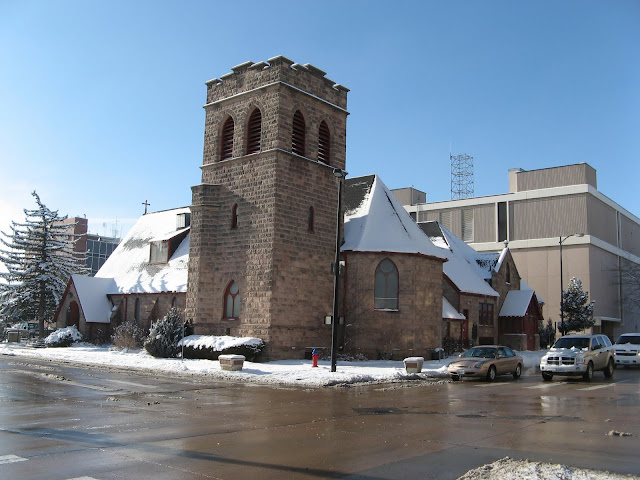Archibishop John Ireland in his later years.
On this day in 1918, a towering figure in North American religion died, Catholic Archbishop John Ireland. He had just turned 80 years of age.
The Irish born prelate is universally regarded as having been born and possessed of a great intellect. It's been said of him, when he was right, he was very right, and conversely, as is the case with towering intellects, when he was wrong, he was very wrong.
Ireland was born in County Kilkenny in 1838 and came to the United States at age 10 with his family. This put him in the midst of the horrible Irish potatoe famine and the accompanying waive of immigration into the U.S., Canada and Australia that accompanied it, with his family, like so many others, choosing the United States for their second home. This meant that he arrived in the country at the depths of Irish despair and the height of prejudice against the Irish in the United States, whom were regarded as an "alien race" at the time. But it also meant, even though hew would have grown up in the "Catholic Ghetto" era, that he came to the country sufficiently young to effectively grow up as an American. These various factors would define his views in profound ways throughout his life.
Ireland was sent to France by the French born Bishop Joseph Cretin at age 14, at which time he'd only been in the United States for a mere ten years. He was ordained in 1861 at age 23 and became a chaplain to the Fifth Minnesota at that time, during the American Civil War. He served in that role until 1863 when poor health forced his resignation. Following that he became a pastor at Saint Paul's Cathedral in Minnesota, Cathedrals having pastors who serve as the Cathedral's priest, a role quite different than that of the Bishop of course. He became a coadjuter Bishop at St. Paul's in 1875, at the fairly young age of 37. He became the Bishop Ordinary in 1884 and an Archbishop in 1888.
As a bishop he was a towering figure and a uniquely original one in many ways. He would become a central figure in American Catholicism as a result, and take positions that some would regard as contradictory but which, at their best, showed his independence in thought.
As an Irish ex-patriot he was deeply concerned about the fate of the Irish in America and encouraged direct colonization of areas in the West and Midwest, taking the view that settling the Irish in rural areas took them out of the vice of the crowded Eastern slums in which many found themselves. Several towns in the Midwest were directly founded by Ireland for this purpose and his concern over what was occurring in Eastern ghettos was not misplaced.
Perhaps almost paradoxically, however, Ireland was an extremely strong proponent of Americanization of American Catholics and he actively worked to prevent the formation of "national", i.e., ethnic, churches. His view left a heavy imprint on the Catholic Church in the United States and this may in some ways be his lasting legacy, although what he was working for had not been fully achieved at the time of his death in 1918. He did not want Irish Catholics or German Catholics to be that, but rather wanted them to be American Catholics. He urged and foresaw an American society in which Catholics were fully part of it, a dream never fully realized but perhaps principally realized (and maybe even in some ways over realized) after World War Two when American Catholics did in fact fully enter the American mainstream. Ireland feared that if this did not happen Catholics in the United States would remain marginalized and the faith would loose adherents to Protestant denominations that were in fact mainstream. His fears were well placed and his efforts would ultimately be successful to a large degree, indeed to such a large degree that some Catholics holding romantic views of the Catholic Ghetto of old essentially lament them even if they do not themselves recall Archbishop Ireland.

As part of this, he was a strong supporter of education but paradoxically, especially for a man who had benefited from a Catholic education himself, he supported state support of Catholic schools in some instances and even supported the municipal takeover of distressed Catholic schools even when it resulted in those schools retaining Priests and Nuns but found them unable to teach religion. This was a phenomenal position to take at the time and it would be very unlikely to receive much Catholic support today. Indeed, he had to travel to the Vatican to explain it at the time. Ireland, additionally, was such a proponent of Americanization of Catholics i the United States that he opposed the use of foreign languages to instruct students, something that was common in immigrant Catholic schools at the time.
Perhaps as part and parcel of this, and perhaps reflecting his Civil War service, he was a Republican and friends with several Republican Presidents. He was an outspoken proponent of the rights of blacks at a time when that was not a fully popular view by any means.
Conversely, these same doctrines made him a dedicated opponent of "national" or ethnic churches to such an extent that he's also remembered today for inexcusably alienating Ruthenian Catholic followers of Alexis Toth. Toth, an immigrant Ruthian (Eastern Rite) priest received a cold shoulder from Ireland upon making a courtesy visit to him upon first arriving in his diocese. As an Eastern Priest with his own Bishop, he was not subject to Ireland's jurisdiction, but Ireland was open in his opposition to the Eastern Rite having a place in the United States and took the view, rather bluntly, that Eastern Rite Catholics should switch to the Latin Rite, which he was working to make non ethnic. This view is completely contrary to the view of the Church today and at the time it lead to Toth, who is regarded now as an Orthodox saint, going into schism and taking his followers and taking a large number of them into the Russian Orthodox Church, to which additional adherents would later follow. Ireland is sometimes jokingly called the father of the Orthodox Church in America as a result.
Ireland was a towering figure and more successful than not. His impact on the Catholic Church in the United States was very large, and because of its nature, lasting. Ironically, his impact upon the Orthodox in American proved to be very large as well, but for a different reason, and perhaps in some ways both churches owe their modern nature to Ireland.












































